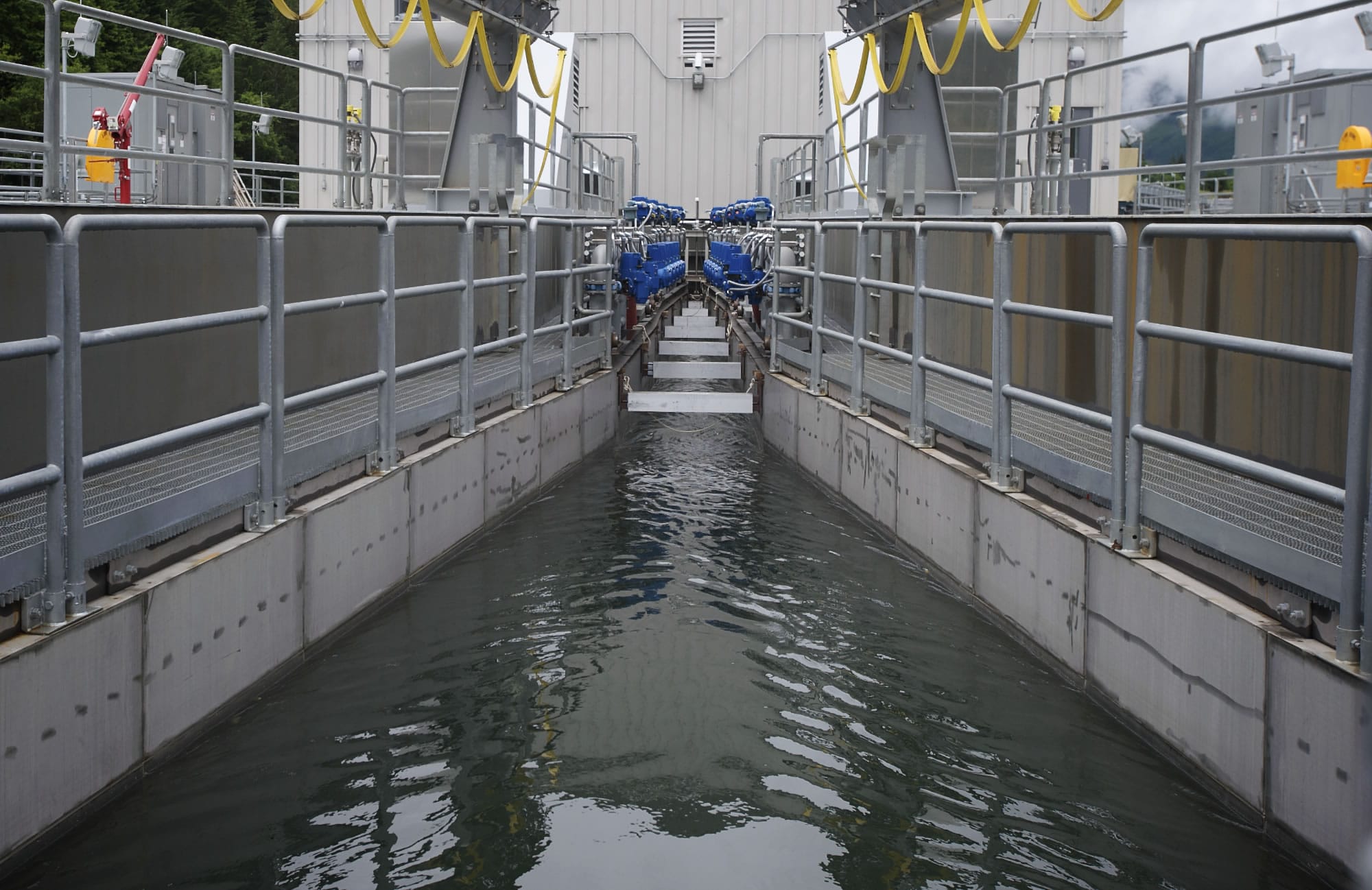It’s not a particular surprise to the fish biologists that more than 500 cutthroat trout have been collected at the Swift Reservoir fish facility trying to move down the North Fork of the Lewis River.
Those fish just might be the pioneers leading to the return of sea-run cutthroat — also called harvest trout — to the popular Southwest Washington river.
Frank Shrier, principal scientist for PacifiCorp, said the utility paid for a sea-run cutthroat program at the Lewis River hatcheries for around 15 years, but the fish never returned particularly well.
So releases of cutthroat were discontinued.
Although they’ve been landlocked for 80 years — since construction of Merwin Dam — some cutthroat in the upper North Fork of the Lewis have retained the urged to migrate to the sea.
“If they show, we’ll take them down and give them a chance,” Shrier said. “If they start a run, we can promote it. If it doesn’t happen, that’s OK, too.”
Modeling was done for spring chinook, coho and winter steelhead — the three species identified for transport up the down the Lewis River — to predict production from the watershed and returning adults.
An analysis for cutthroat trout was not part of the modeling.
Chris Karchesky, fish passage coordinator for PacifiCorp on the Lewis River, said cutthroat are somewhat similar to steelhead and able to return to spawn more than once.
“They don’t really go out in the ocean,” Shrier said. “”They kind of just hang in the estuary, that area. They don’t go very far out.’
There is no goal for cutthroat production.
“It would be an added plus if it happens,” he said. “Bull trout are the same situation.”
Bull trout are listed under the federal Endangered Species Act. The fish are a member of the char family, not a true trout.
Swift Reservoir and a couple of its tributaries are home to a population of bull trout. No harvest is allowed.
Eight bull trout — a mix of adults and sub-adults — have been captured at the Swift Reservoir facility.
“If they are in that general population tank, those young bull trout, they’re going to go out with the rest of the smolts,” Shrier said.
Potentially, a sea-run population of bull trout might be established. Another possibility is a population that goes to the Columbia River, hangs out, then comes back.
“If they come back as adults, if they go in to the Merwin trap, we’re going to take them upstream,” he said. “If it happens, let it happen.”




